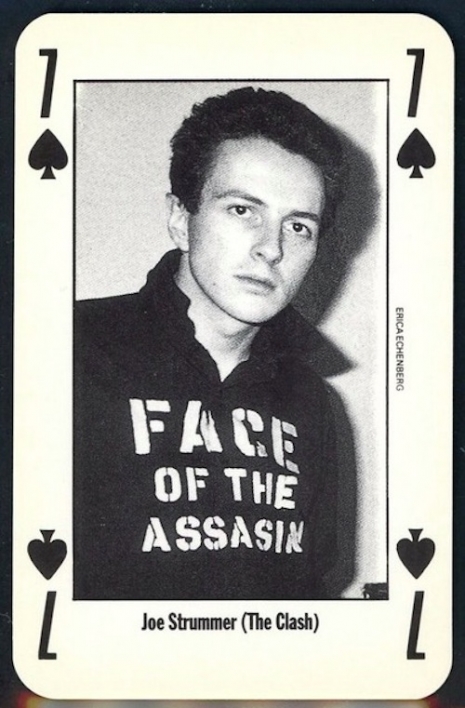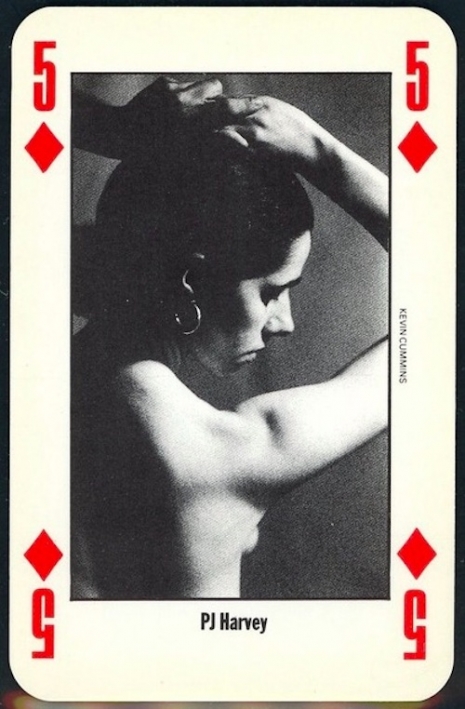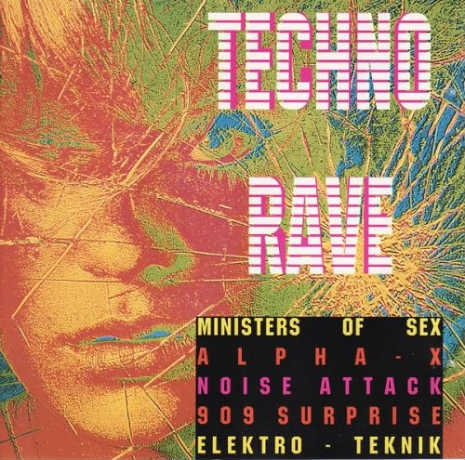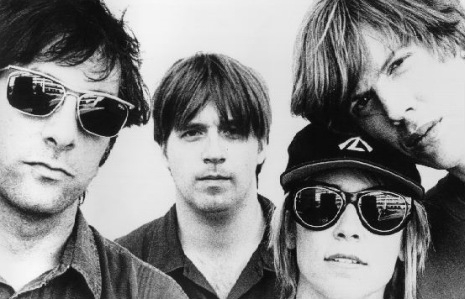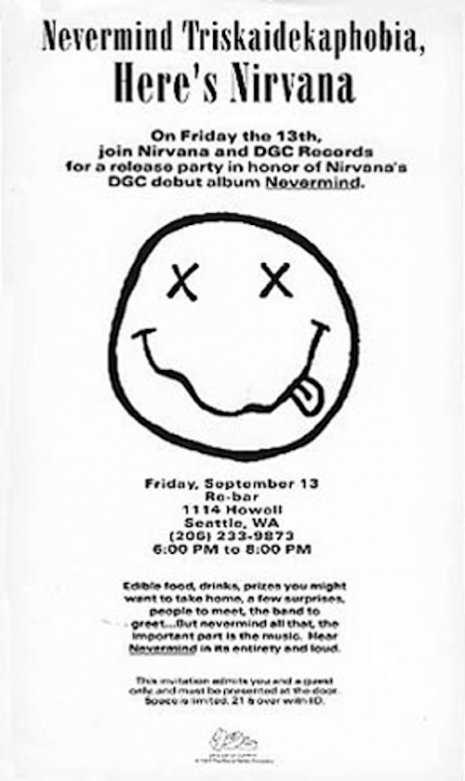
The invitation for the ‘Nevermind’ record release party held at Re-bar in Seattle on September 13th, 1991.
“Nevermind Triskaidekaphobia, Here’s Nirvana. On Friday the 13th, join Nirvana and DGC Records for a release party in honor of Nirvana’s DGC debut album Nevermind. Edible food, drinks, prizes you might want to take home, a few surprises, people to meet, the band to greet… But nevermind all that, the important part is the music. Hear Nevermind in its entirety and loud.”
—the details for Nirvana’s album release party for Nevermind.
The first signal that things at Nirvana’s record release party for Nevermind might get out of hand was it was a strictly “beer only” event. To remedy this, Kurt Cobain’s pal Dylan Carlson of the band Earth snuck in a huge bottle of whiskey (allegedly Jim Beam) served it up covertly in a photo booth inside the infamous Seattle entertainment mecca/gay-friendly watering hole, Re-bar. Smuggling booze into a bar is a thing thrifty drunks do, but you also might be asking yourself why did it have to be smuggled into a bar hosting a party full of industry types from Geffen Records, local label Sub Pop and thirsty musicians? To explain this, we have to consider Seattle’s long, complicated history with hard liquor. Prior to the 1970s, it was illegal for people to drink whilst standing up, and women were not permitted to sit on bar stools.
Additionally, and until very recently, all sales of hard liquor were controlled by Washington State and obtaining a license to sell booze in clubs, restaurants, and other establishments was challenging. Getting a license to sell booze was even more difficult for venues that catered to lovers of “black” music or that was welcoming of gay people. The Washington State Liquor Board started watching Re-bar (a gay hotspot) microscopically, and would often roll into the club close to closing time to check up on Re-bar’s clientele and essentially harass patrons and employees.

A photo of Nirvana (apparently with former publicist Susie Tennent) taken inside the whiskey bar/photo booth at Re-bar.
In Everett True’s book Nirvana: The Biography, author and journalist Carrie Borzillo remembers she was told the reason Re-bar wasn’t able to serve liquor at the Nevermind record release was due to the venue also serving food (or the frightening promise of “edible food” as the invitation at the top of the post notes). Borzillo arrived at the party, and after surveying the food, spotted Cobain allegedly knocking back a fifth of Seagram’s straight out of the bottle. There were several kegs of beer but the free suds disappeared quickly. Sub Pop’s Bruce Pavitt was DJ’ing the party, and around the time the beer ran out, he had already spun Nevermind twice and twice was enough for Kurt, Krist, and Dave, who started feeding Pavitt requests to play new wave and disco hits. Naturally, Pavitt, a purveyor of good taste, complied. It wouldn’t be long before some of the edible food offered up at Re-bar starting flying, and Borzillo’s new dress was covered by onion dip.
The first food item that became a projectile was a tamale hurled by Krist Novoselic at Kurt and Dylan Carlson.
Since Nirvana was no newbie to food fights, Kurt whipped some guacamole back at Krist, though Nirvana fan club founder Nils Bernstein was certain (as noted in Nirvana: The Biography) Kurt actually threw Green Goddess dip at Krist, because these details are fucking important. Amid the flying food chaos, someone thought it would improve the party’s awesome anti-ambiance by rolling the tapped kegs around the bar. Steve Wells, the owner of Re-bar at the time collected the three knuckleheads who started the food fight, the guests of honor, and tossed the trio (as well as Bruce Pavitt) out on Howell Street, where they would proceed to puke, because it’s not really a night to remember until someone barfs.
Recently, Screaming Trees guitarist Gary Lee Connor shared his memories of the night recalling that after Nirvana got booted, he heard Krist egging on the people still inside their party through a barred open window, sarcastically “begging” to be let back in. Since this is Seattle in the magical year of 1991, Susie Tennant, the band’s publicist at the time, pulled up in a limousine and brought the band and a few friends back to her house to continue the festivities. Kurt slingshot eggs at her neighbor’s cars with Fastbacks vocalist, the always well dressed Kurt Bloch. Now that’s a fucking party. A few photos of the night Nirvana got kicked out of their own party because they knew how to party follow.
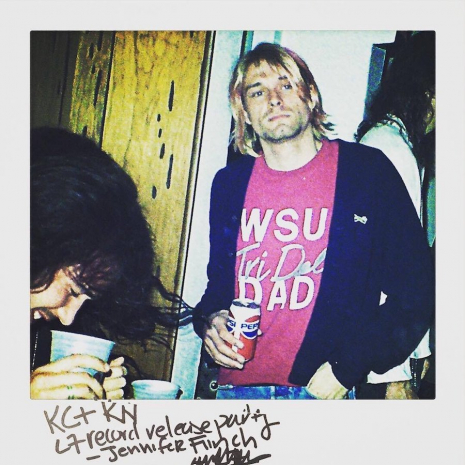
A photo taken at the Re-bar party by Jennifer Finch of L7.
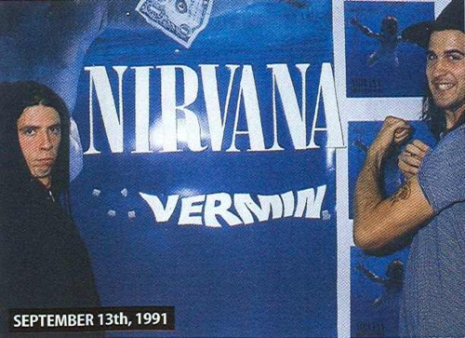
Dave Grohl and Krist Novoselic.
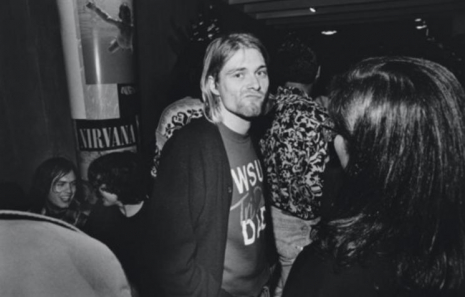
A thrilled looking Kurt Cobain at the Nevermind record release party. Photo by Charles Peterson.

Dylan Carlson (standing), Screaming Tree’s vocalist Mark Lanegan and Kurt playing dress up at Susie Tennant’s apartment. Photo credit.
Previously on Dangerous Minds:
‘Experiencing Nirvana: Grunge in Europe, 1989’: Sub Pop co-founder Bruce Pavitt on his new book
Incredible early Nirvana gig at a tiny East Coast goth club, 1990
Watch a very tired Nirvana being interviewed just a few weeks after ‘Nevermind’ came out
Nirvana, Mudhoney, and the audience battle shitty security guards during Sub Pop’s ‘Lame Fest,’ 1989









